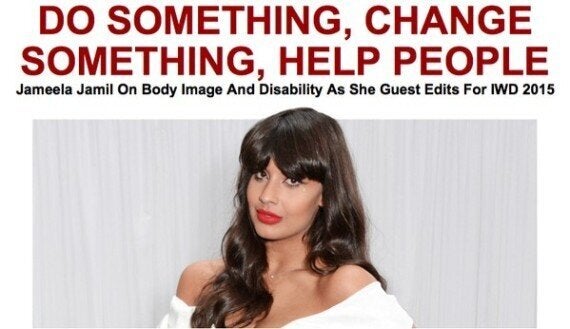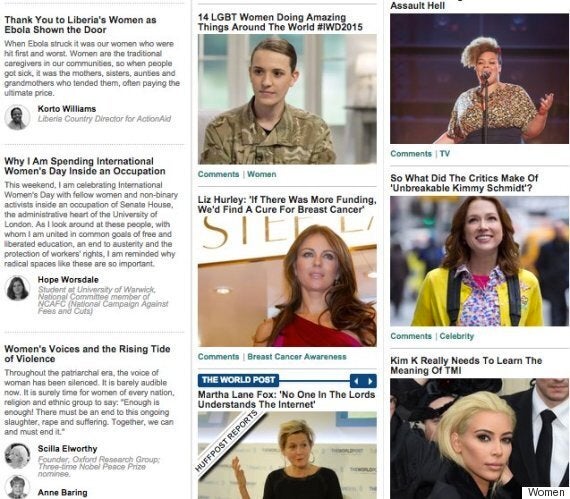On Sunday, The Huffington Post UK imposed a 24-hour ban. On men. We decided to only use pictures of women on the front page - except for Richard Branson, who we'll get onto later.
You may well be thinking this is censorship. This is prejudice against men. Yes, it is.
I didn't actually think it was a good idea - more of an interesting experiment. To remove pictures of men from our home page, just because they are men, is obviously unfair. Yet it served a purpose.
When we report the news, we pick what we consider to be the biggest stories for our readers. Sometimes they are about men, sometimes they are about women (and sometimes about dresses, or dogs, or weasels riding birds).
But often, they are about men. So, especially on a politics-heavy day, our home page is strewn with pictures of men in suits. Women, it seems, aren't news.

Our front page on IWD 2015
It's not just us. A quick glance this afternoon confirmed there were no images of women visible in news content when I opened the browser on the home pages of BBC, The Times, The Guardian or The Independent.
The home page is far less important than it used to be - many news sites get the bulk of their traffic through social media - but the front page is still symbolic of what we think is important. On Sunday we decided that should be women.
So, just before International Women's Day dawned, I put our plan into action. For some of our existing news stories that used pictures of men, I could credibly simply swap the picture for one of a woman.
Obama had made a rousing speech on the Selma civil rights march. I replaced the president's picture with an image of women in the audience being roused, which seemed a reasonable substitute.
I picked a female campaigner from the large climate march which had taken place in London. For our report about politicians calling for parliament to be recalled days after the election, Cameron and Miliband made way for MP Sarah Wollaston, who was a key part of the campaign.

The homepage on Sunday
In the case of these stories, it made sense to swap in a picture of a woman. But others, like an article on Islamic State, which was best represented with men with guns, well - that couldn't stay. Neither could Harrison Ford's plane crash.
Most of the top blogs on the homepage - which show an image of the writer next to the headline - were already by women, as so many write about International Women's Day. The blogs team were on board with my women-only homepage but decided Richard Branson's piece on gender equality should stay, so he remained the sole boy among a sea of girls. I surrounded him with our International Women's Day content (edited by Jameela Jamil), and the news team spent the day seeking out news involving women, which was a refreshing, positive experience. As it happened, there was no major story that needed a man's picture to make sense.
The odd thing was that, despite my belief that women must be better represented in the media (both in number and in the way they are depicted), I felt uneasy. While our homepage looked great, it also looked, well, weird.
Instinctively, I don't associate pictures of women with news. If I was a reader, and saw a woman-filled home page on a normal day, I would probably wonder where all the real news was. Seeing so many female faces staring back at me was totally alien.
This was perfectly logical. Men run the government and most of our businesses, men are fighting and leading most wars, men are committing most crimes. These topics are what we and many other news organisations consider to be 'hard' news, and reasonably so. They are subjects that matter because they encompass our most basic interests: our rights, our economy, and our safety.
Changing all the pictures in the world won't change who's in charge overnight. But we can do something to help - not by imposing a women photo quota, but by experimenting and being mindful of the context we're operating in.
As we move gradually towards gender balance in these spheres (though we'll leave crime, thank you) women's faces will be a little more common on news pages - and they'll be all the better for it.
